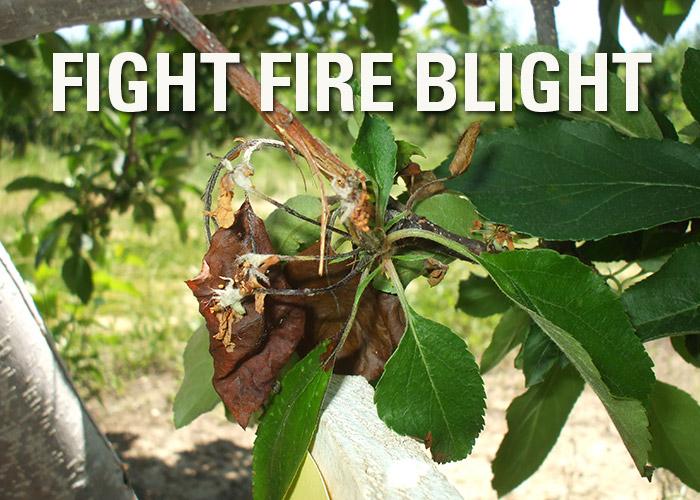Fire Blight is the most damaging bacterial disease that affects shrubs and trees in the Rosaceous family and occurs during warm spring weather when combined with rains or heavy dews. This disease is most often found in pear, apple, loquat and crabapple trees and has become a nuisance to homeowners and commercial landscape managers. Flower infections can be introduced by bees and other insects from infected wood cankers that ooze bacterial substance in the spring. Trees infected with the fire blight bacterium often have extensive limb cankers and dieback with a characteristic “Shepherd’s Crook” appearance at the tips of the shoots.
Symptoms
The first sign of a fire blight infection is early death of flowers and then green shoots immediately adjacent to the flower petiole. The bacterium moves into the wood of twigs and lateral branches, which express black cankers and can turn completely black. By further spreading of the bacterium through rain splashes and insects to other flowers and shoots, symptoms will often appear scattered throughout the canopy; however, if the weather conditions are favorable for disease progression, the whole canopy can be severely affected with a burned appearance thus explaining the name “fire blight.”
Treatment
For treatment of fire blight, use Arbor-OTC®. Arbor-OTC is a systemic, water soluble, injectable antibiotic for the annual suppression of bacterial diseases in non-food bearing trees and palms. This shelf-stable, water-soluble powder comes in two sizes and does not require refrigeration. Generally, the best seasons for injection are spring and fall, since uptake occurs when trees are transpiring. The environmental conditions that favor uptake are adequate soil moisture and relatively high humidity. Soil temperature should be above 40°F for trunk injection. Hot weather and/or dry soil conditions may slow translocation of product into foliage so water trees before and after treatment application. If treating trees in the summer, inject in the morning for the quickest uptake.
Add NutriRoot for Best Results
The addition of a soil surfactant, such as NutriRoot, as a drench or sub-surface soil injection will encourage water to move deeper into the soil and increase moisture availability to the tree over time.
What to Expect After Treatment
The earlier in the bud break the injections are conducted, the better fire blight reduction is achieved. Trees that have adequate soil moisture and warm daytime temperatures will distribute Arbor-OTC upward in the tree within 7-10 days. When early spring dead wood removal is combined with annual treatments of Arbor-OTC, canopy loss will be tremendously reduced.
Contact us for more information!

